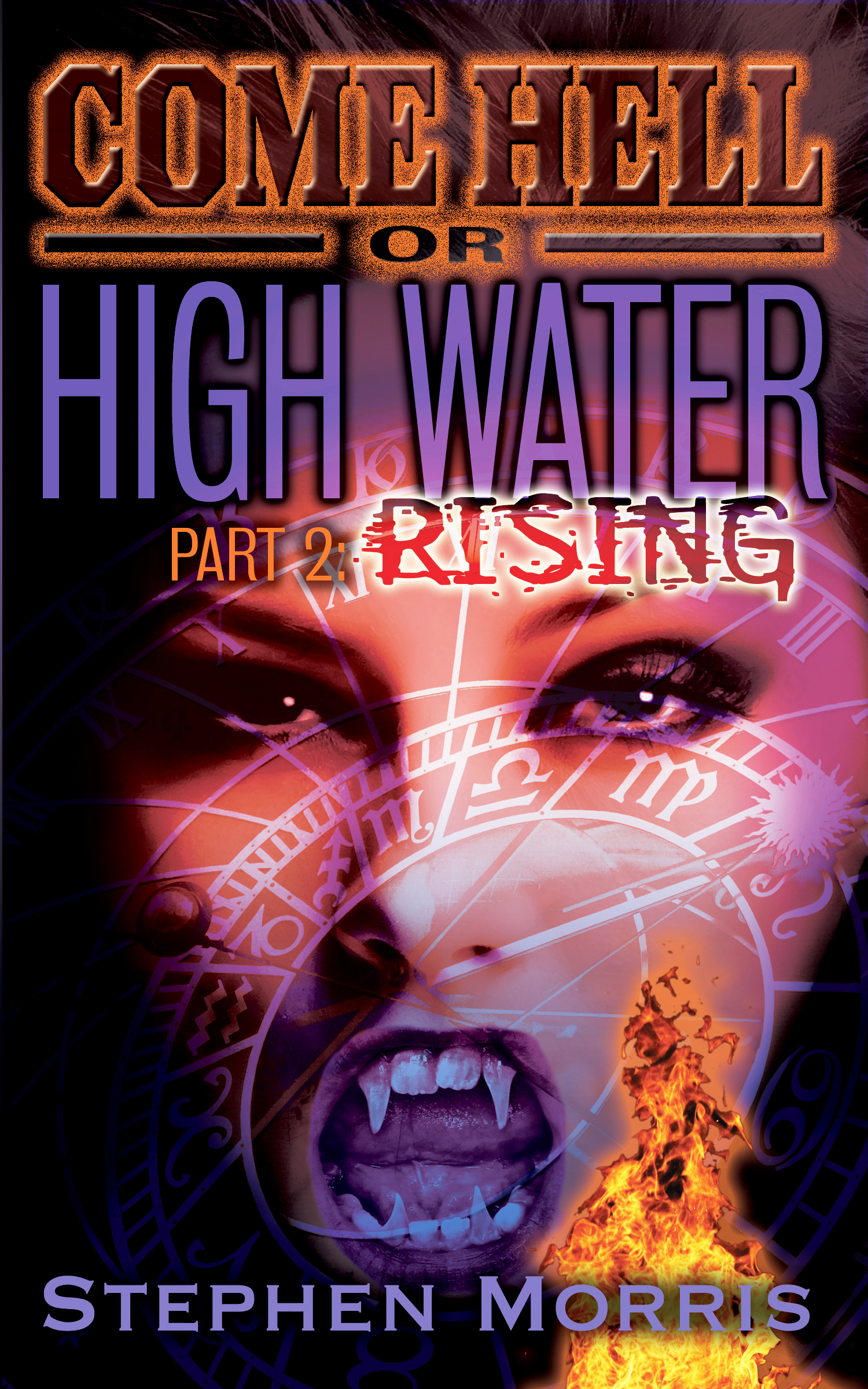 Title: Come Hell or High Water, Part 2: Rising
Title: Come Hell or High Water, Part 2: Rising
Series: Come Hell or High Water
Genre/Keywords: Historical Fantasy
Length: 566 pages
Sample Chapters: Click here
Release date: Print: October 4, 2012 – ebook: October 1, 2012
Purchase Links: Amazon (print): http://amzn.to/15bvepp – Amazon (ebook): http://amzn.to/WA758t
Book Summary:
“Magdalena, a bored secretary at Charles University in Prague, has come to the aid of Fen’ka, a woman lynched by a mob for witchcraft in 1356. Unknown to Magdalena, Fen’ka cursed the city as she died and Magdalena has now unwittingly reawakened the curse and brought to Prague both the Dearg-due (a voracious Irish female vampire-like creature) and a dangerous Jesuit who, upon hearing of what transpired with Fen’ka, develop their own nefarious agendas. To access the enormous potential power to which Fen’ka holds the key, they dupe Magdalena into helping destroy the city. A small group of academics realize the danger facing Prague and struggle to keep one step ahead of the Dearg-due and the Jesuit, hoping to send the Dearg-due back to her grave.”
Book Reviews:
KIRKUS REVIEW – December 3, 2012
“An engaging, suspenseful occult novel set in historical and contemporary Prague.
In this sequel to Come Hell or High Water: Wellspring (2012), a group of professors specializing in folklore and magic attempts to prevent George, a powerful priest, and Elizabeth, an Irish vampire, from unleashing an evil that threatens to destroy all of Prague. Both George and Elizabeth were called to Prague by Magdalena, who summoned them to help fulfill the dying wishes of Fen’ka, a woman burned alive as a witch in the 14th century. Unbeknownst to Magdalena, Fen’ka seeks the return of Svetovit, a pagan god who will bring destruction to the modern world. Both sides scramble to find four magical items that protect Prague from evil: a sword, a staff, a pentacle and a chalice. The first half of the novel is a mystery in which the professors try to identify the magical items, while the second half becomes a suspenseful race as both sides try to obtain the items. The plot in this volume is more exciting than Wellspring and also more erotic, especially the scenes showing Elizabeth seducing men and then feeding on their blood. Chapters alternate between the main plot and loosely connected stories of the occult from medieval Prague that illustrate the effects of Fen’ka’s curse. Those historical episodes, which aren’t linked to the modern chapters, sometimes seem like parts of a different novel; however, they include evocative scenes featuring Czech slang and medieval social and religious practices, with characters, particularly women, using the occult to rebel against the rigid social bonds of the time, marriage especially. Carrying over from Wellspring, dialogue is still somewhat awkward, although it’s more naturalistic here. While the previous volume felt slow to develop, the sense of danger in this outing is palpable from the start, and the intensity, at least in the modern chapters, rarely lets up. Also included are several Czech legends, such as the story of Rabbi Judah ben Loew creating the Golem, which should appeal to readers with an interest in folklore.
A stark division of narratives, but each is absorbing, especially for history fans.”
Bitten by Books – October 29, 2012
“Magdalena is working closely with two conference participants in order to clear the name of Fen’ka, a woman who, in 1356, was burned at the stake for being a witch. Magdalena believes George and Elizabeth are here to help her with her quest, and seems to have fallen completely under George’s spell. Neither George nor Elizabeth are what they appear to be, and Magdalena is placed in increasingly difficult situations in order to locate the four artifacts of Prague before another group of conference participants do — those who are trying to save Prague from the curses Fen’ka delivered from the stake.
The conferences on Monsters and Evil are going well, and the eight participants who have banded together to find the artifacts are finding danger at every turn, once they learn that their efforts are being thwarted by George, a Jesuit priest with a desire for dark power, and Elizabeth, a Deargh-due, an Irish vampire type who also has magical powers.
This second book in the trilogy definitely holds attention as Magdalena continues her search to clear Fen’ka’s name. I particularly enjoyed the chapters set in 1356 and 1357 that show some of Fen’ka’s curses coming back on the people of Prague. The eight conference participants that are working together are strong in knowledge on folklore, but must dig deeply within themselves to find the courage needed to find the sacred artifacts before Magdalena and her companions. This is definitely not a stand-alone book; they must be read in order so they can be fully understood. I can hardly wait for the final book to come out so I can have the complete story of Magdalena and Fen’ka’s curse.”
